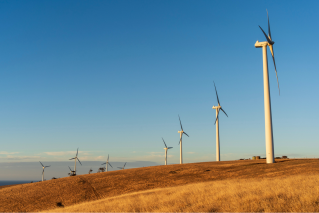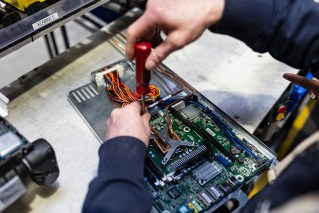Voyager 2’s long journey takes it out of solar system

The mission was only mean't to last five years. Photo: NASA
NASA’s Voyager 2 probe has breached the final frontier in space – but the world wouldn’t even know if not for a group of Australians listening in.
The probe has officially left our solar system and entered interstellar space – some 18 billion kilometres from Earth – and has been busy sending back data to scientists in Canberra and Parkes in central west NSW.
While it’s only the second human-made object to make the journey, it’s the first probe that’s been capable of sending back detailed information to scientists, providing humans with the first glimpse of the mysteries of space.
And none of that information would have seen the light of day without Australia’s help.
“We’re sort of the telephone exchange for the universe,” CSIRO spokesman Glen Nagle told AAP on Tuesday.
“We are the only facilities in the world that can link communications with the Voyager 2 spacecraft.”
Teams at the CSIRO’s Parkes radio telescope and the Canberra Deep Space Communication Complex combined forces so NASA could collect as much information as possible from the spacecraft which, while still mostly in working order after being launched in 1977, can no longer record data.
“So if there’s no one listening that data is lost forever,” Mr Nagle said.
“The signals we get back are 20 billion times weaker than the power generated by a watch battery, so we are capturing whispers from space.
“But these whispers are a loud shout for scientists of what we’re now able to explore in the universe.”
Scientists had their first hint Voyager 2 was close to entering interstellar space a few months ago when data from what’s known as the heliosphere – the protective bubble of particles and magnetic fields created by the sun – began to dip and new input from the gateway to interstellar space began to trickle in.
“Our sun pumps out energy in all directions known as solar wind and that energy streaming out collides with all of the energy coming in,” Mr Nagle explained.
Data shows the Voyager 2 crossed into interstellar space on November 5, and it has been sending back information at the speed of light, taking around 16.5 hours to reach Earth.
“It was about a month’s worth of checking to make sure the universe wasn’t playing tricks on us,” Mr Nagle said.
“As a species we’ve always wanted to push the boundaries of what’s possible, exploring the final frontier and going where no one has ever gone before and literally we are getting to do this now.”
Voyager 2 is expected to stop being able to send back science data in 2025 and we will lose communication completely with Earth by the early 2030s.
The Voyager probes were only designed to last five years and study the giant gas planets Jupiter and Saturn.
Their refusal to die has also let them study Uranus and Neptune, the solar system’s outermost giant planets.
Both probes carry a phonograph record.
The gold-plated copper disk bears sounds, images and spoken greetings in multiple languages to depict Earth’s diversity of life and culture, intended to communicate with potential extraterrestrial beings.
The two probes have not officially exited the solar system, whose outermost region is a shell called the Oort Cloud comprised of numerous small icy objects still under the sun’s gravitational influence.
“I often get asked, ‘So, is this it for Voyager? You’ve crossed out of the heliopause. Is it done? Are we finished?’ said Nicola Fox, director of the heliophysics division at NASA.
-AAP








